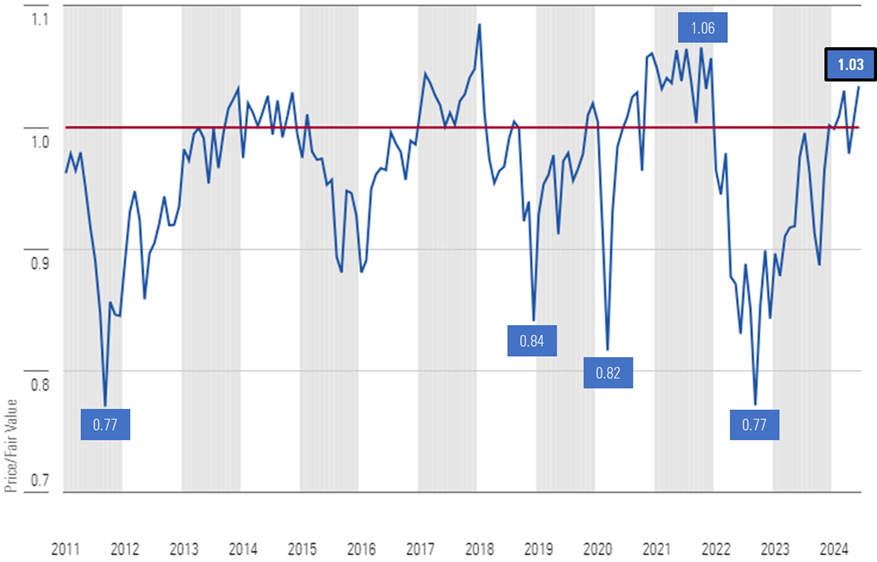The capability to modify the trading platform in accordance with your goals in trading, tolerance for risk, and the current market conditions is an essential feature of AI-based stock prediction and analysis trading platforms. A platform offering a range of customizations can enhance your trading. Here are 10 tips to evaluate the flexibility of these platforms.
1. Evaluate Pre-Built Strategy Templates
Variety of templates: Check whether the platform has a range of pre-built strategies to suit different styles of trading (e.g. swing trading, day trading, and long-term investing).
Simple to use: Consider how easy it is to modify and adapt these templates to your requirements.
Performance historical data. Check if the platform includes historical performance information for prebuilt strategies.
2. Assessment Customized Strategy
Drag-and-drop tools: Look for platforms that provide intuitive drag-and-drop interfaces for creating customized strategies.
Coding options: For more advanced users, check if the platform allows custom coding in proprietary scripting language (e.g. Python, R).
Flexibility - Make sure that the platform you choose allows you to define rules for the entry and exit of your business, as well as parameters for risk management, as well as other important components of your strategic plan.
3. Check for Backtesting Capabilities
Historical data: Find out whether your platform provides sufficient historical data to allow backtesting strategies.
Flexible parameters - Make sure you are able to alter parameters (e.g. timeframes, indicator) while back-testing.
Performance metrics - Check to see if your software offers detailed performance indicators (e.g. the winning rate, Sharpe coefficient or drawdown) for all backtested strategies.
4. Evaluate Real-Time Strategy Testing
Paper trading Try out strategies in real-time with simulation or paper trading.
Live testing - Check that you are able to test strategies using small amounts to see how they work.
Real-time adjustments: Examine to find out if your plan can be adapted in real-time to the market conditions.
5. Integrate integration with technical indicators
Indicator library: Check whether the platform has a comprehensive collection of indicators that are technical (e.g. Moving averages, RSI, MACD).
Custom indicators: Ensure that you have the ability to import or develop custom indicators to match your strategies.
Verify the indicators' combination.
6. Check for Risk Management Tools
Stop-loss/take-profit: Ensure the platform allows you to set stop-loss and take-profit levels within your strategies.
Sizing your positions. Make sure you have defined rules on how to manage the risk (e.g. an amount that is set, percent of portfolio).
Risk-reward ratio: Check whether the platform can set risk-reward ratios on individual strategies or trades.
7. Evaluate Multi-Asset Strategy Support
Asset classes: Ensure the platform supports strategies across different asset classes (e.g. ETFs, stocks, forex).
Cross-asset Strategies: Find out whether it is possible to devise strategies that blend various asset classes.
Market coverage: Determine if the platform offers the services you need (e.g. US, international or copyright).
8. Review Automation, Execution and Execution
Automated trading. Make sure the platform supports automated execution, based on previously defined strategies.
Types of orders - Make sure that the platform can support a variety of order types for execution strategies (e.g. stop limit, market or stop).
Check for latency: Make sure that the platform is able to allow trades to be executed at minimal delay. This is particularly important for high-frequency strategies.
9. Check for Strategy Optimization Tools
Parameter optimization - Make sure that the platform includes tools for optimizing the strategy parameters.
Machine learning integration: Check if the platform integrates machine learning in order to refine and improve strategies.
Scenario Analysis: Find out if the platform supports testing strategies for various markets (e.g. bull or bear and volatile).
Read the Community Feedback and User Reviews
User feedback: Use user feedback to evaluate the efficacy of the platform for customizing strategies.
Community forums - Check for if a platform has a community which is active and where members can discuss their unique strategies.
Support resources for users - Make sure that the platform includes tutorials and documentation to help users create and improve strategies.
Bonus Tips
Trial period: Take advantage of the demo or trial version for free to test the platform's strategy and customization capabilities.
Scalability: Make sure the platform is able to handle more complicated strategies as your trading expands.
Support for customers: Find out if there's support for your questions or concerns related to the strategy.
Following these tips can help you assess the ability of AI trading platforms to tailor their strategies. You'll be able to choose the best platform for your trading needs and allows for you to refine and implement your strategy. A platform offering strong customization options allows you to change your strategy to meet changes in market conditions and boost your performance. Take a look at the top ai for investment for website tips including best ai stock trading bot free, ai investing platform, ai trade, ai investment app, incite, best ai stock, best ai stock trading bot free, ai for stock predictions, ai for investing, best ai trading software and more.

Top 10 Tips For Evaluating The Speed And Latency Of Ai Stock Predicting/Analyzing Trading Platforms
The speed and the latency of a trading platform are important factors to be considered, especially for active traders or high-frequency investors, as well as algorithmic ones. Milliseconds could affect trade execution and profitability. Here are the top ten tips for assessing latency and speed on these platforms:
1. Real-time data feeds to be evaluated
Speed of data delivery: Make sure the platform is able to deliver real-time information with a minimum delay (e.g. sub-millisecond latency).
Data source closeness: Determine if servers are located in proximity to major exchanges.
Data compression: Find out if your platform utilizes efficient techniques for data compression to speed up data delivery.
2. Test Rate for Trade Execution Rate
Order processing time is the time that your order will be processed and completed through the platform.
Direct market access (DMA) Check if that the exchange platform provides DMA that lets orders be made directly to the exchange without intermediaries.
Execution reports. Verify that the platform provides detailed execution reports. These reports should include timestamps on the submission of orders, confirmation of orders and fill.
3. Examine the Platform Response
User interface (UI) speed: See how fast the UI on your platform responds to inputs (e.g. click buttons or loading charts).
Chart updates: Check that charts and visuals are updated in real-time, without delay.
Performance of mobile applications: When using a mobile application, make sure that it's just as fast as your desktop version.
4. Verify that the infrastructure is not low-latency.
Server Locations: Use servers that have low latency and are close to major financial centers or exchanges.
Co-location services: Find out if your platform offers this feature. This allows you to host trading algorithm on servers located near the exchange.
High-speed networks: Determine if the platform is using high-speed fiber optic networks or low-latency technology.
5. Backtesting and testing the speed of simulations.
Find out how quickly the platform processes and analyzes old data.
The latency of the platform should be low enough to permit live simulations of trades in real time.
Parallel processing: Determine whether the platform makes use of distributed computing or parallel processing to speed complex calculations.
6. Estimate API Latency
API response times: Find out how quickly APIs can respond to queries (e.g. retrieving data from the platform, placing orders).
Limits on rates. Check the API's rate limits in order to avoid delays while high-frequency trading.
WebSocket Find out if your platform is compatible with WebSocket protocols which permit streaming data in real time with low latency.
7. Test Platform Stability Under Load
High-volume trading: To test the platform’s responsiveness and stability, simulate high-volume scenarios.
Market volatility: Make sure your platform is able to handle price fluctuations during times of high volatility.
Testing stress: Find out whether the platform permits you to test your plan under extreme conditions.
8. Evaluate Network and Connectivity
Internet speed requirements: Ensure your internet connection is at the speed recommended by your internet provider to achieve optimal performance.
Redundant Connections: To prevent delay, verify that your platform supports redundant internet connections.
VPN latency. If using a VPN check to see if it introduces a significant amount of latency.
9. Check for Speed Enhancement Features
Pre-trade analytics - Ensure that the platform you choose to use has pre-trade analytical tools that can help optimize the routing of orders.
Smart order routing: Find out whether your application is using SOR to find the most cost-effective and fastest execution location.
Monitoring latency: Check that the platform offers tools to monitor and analyze latency in real-time.
Review User Feedback Benchmarks
User reviews: Examine user feedback to assess the platform’s performance on latency and speed.
Benchmarks from third-party sources Find independent reviews or benchmarks comparing the speed of the platform versus the speed of its rivals.
Testimonials and case studies: Find out whether there are case studies that demonstrate the platform's low-latency abilities.
Bonus Tips
Trial period: Take a the free trial or demo version of the platform to check out the performance of the platform in real situations.
Support for customers: Check to see if the platform provides support for latency issues or optimization.
Hardware requirements: Determine if your platform requires specific hardware to ensure maximum performance.
These tips will help you evaluate the speed and latency of AI software for predicting and analyzing stocks. In this way, you'll be able to choose a platform which meets your needs while minimizing delays. Low latency trading platforms are vital for traders who use high-frequency algorithms. Small delays can negatively impact their profits. Take a look at the top the advantage about ai stock predictions for website advice including how to use ai for stock trading, ai options trading, ai share trading, ai stock predictions, best ai stocks to buy now, ai stock investing, best stock prediction website, chart ai trading, best ai for stock trading, best ai for stock trading and more.
